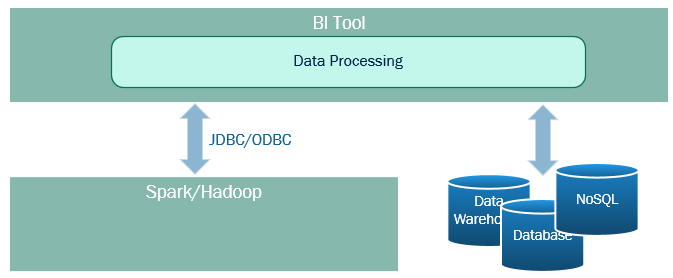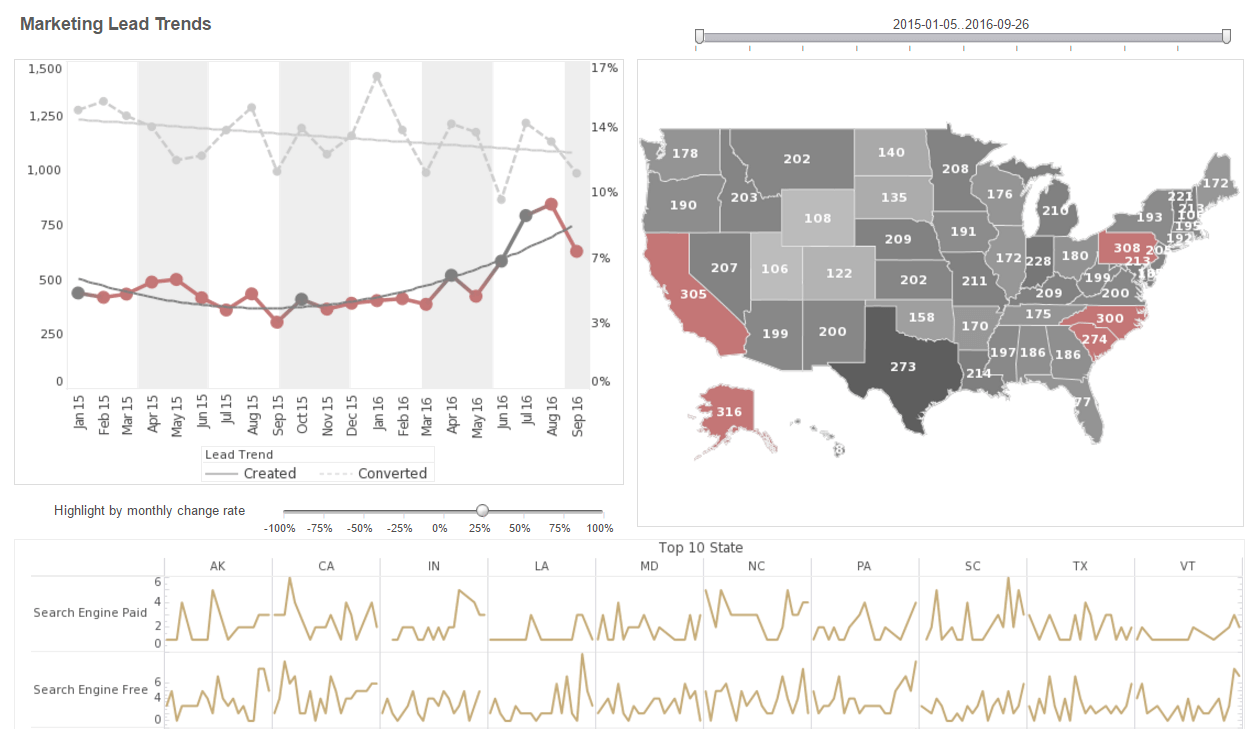Supercharging BI with Spark, Easy Machine Learning with InetSoft
A Little Bit of History
Even since the creation of the Apache Hadoop project more than 10 years ago, many attempts have been made to adapt it for data visualization and analysis. The original Hadoop project consisted of two main components, the MapReduce computation framework and the HDFS distributed file system.
Other projects based on the Hadoop platform soon followed. The most notable was Apache Hive which added a relational database-like layer on Hadoop. Together with a JDBC driver, it had the potential to turn Hadoop into a Big Data solution for data analysis applications.
Unfortunately, MapReduce was designed as a batch system, where communication between cluster nodes was based on files, job scheduling was geared towards batch jobs, and latency of up to a few minutes is quite acceptable. Since Hive used MapReduce as the query execution layer, it was not a viable solution for interactive analytics, where sub-second response time is required.
This didn't change until Apache Spark came along. Instead of using the traditional MapReduce, Spark introduced a new real-time distributed computing framework. Furthermore, it performs executions in-memory so job latency is much reduced. In the same timeframe, a few similar projects have emerged under the Apache Hadoop umbrella such as Tez, Flink, and Apex. Finally, interactive analysis of Big Data was within reach.
Current State of Art
As Spark quickly gained the status of the leading real-time cluster framework, it has attracted much attention in the BI community. By now, almost every BI vendor has some kind of story about integrating their products with Spark.
The most common integration is to treat Spark as a new data source. A BI tool could be connected to a Spark/Hadoop cluster through a JDBC/ODBC driver. Since Spark SQL provides an SQL-like language, it could be treated as a traditional relational database. This approach is simple and easy to accomplish, so it is normally the first option when a BI tool integrates with Spark.
Some tools tried to go further. One option is to use Spark as a replacement for ETL. Instead of the traditional ETL pipeline, data could be ingested into a Hadoop cluster, and Spark is used to transform and process the raw data. The result is saved into another data store to be consumed by the BI tool.

Native Spark Integration
Using Spark in various roles outlined above has its value, and Spark will continue to be an important part of the overall BI pipeline. However, keeping Spark outside of the BI tool fails to take full advantage of the power of Spark in many ways.
First, having Spark as an external system means data needs to be moved from a Spark cluster to the BI tool. In the age where software is actively engineered to reduce data movement even between RAM and CPU cache, moving data between machines or processes can be disastrous to performance.
Secondly, treating Spark simply as a database, or even as a preprocessor of data, robs a BI tool of the opportunity to fully utilize the computing power of a cluster. Imagine when you need to join data from Spark and a simple in-memory reference table. Since the in-memory table is not part of the Spark cluster, the BI tool needs to execute a query against Spark, bring the data out of the cluster and into the BI tool, and then perform a join in the BI tool.

This example illustrates the two main disadvantages of keeping a BI tool separate from Spark. First, potentially large amounts of data may need to be moved between systems. Additionally, joining of the data cannot be performed inside the cluster. This may result in the cluster being idle while a single BI server is consumed with performing the actual data processing.


